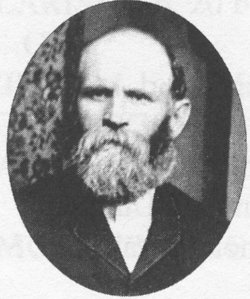What do we know about Philippe Messervy’s emigration to Newfoundland?
§ Ledwell, cited in Downer
(p.27) suggests that both Jersey and English settlers were in the area of Sandy
Point about 1783
§ Cormack, W.E. visited Bay
St.George in 1822 and stayed with Philippe Messervy, noting that he had been
established there for some time. Cormack estimated that there were
approximately 100 residents at that time, of either Jersey or English descen
§ A Jersey source suggests
Philippe was in Sandy Point before 1800 (http://www.theislandwiki.org/index.php/Jersey_emigrants_to_Newfoundland)
§ Ed Chafe, a Newfoundland
researcher, has Philippe Messervy arriving in Sandy Point in 1794, making him
25 yrs. of age
§ Mannion describes Jersey
and southwest English settlers operating in the summer fishery in the second
half of the 18th century and that by the 1770s a few remained during the
winter, “operating as winter caretakers for British mercantile concerns.” There
is always a possibility that Philippe Messervy was initially a summer fisher,
returning to settle permanently before 1800
§ Butt notes that Capt.
Cook visited Bay St. George in 1767 and did not note any settlers in the Sandy
Point area (p. 34); he also refers to Father Michael Brosnan’s history of the
St. George’s Diocese stating that Philippe and Susan (Susanne) Messervy settled
at Sandy Point in 1789.
§ Butt also states that a
Capt. Ambrose Crofton of the vessel Pluto reported one Messervy family and one
Dennis family at Sandy Point area in 1797. (p. 163)
§ Leconte, a French naval
officer who visited Bay St. George in 1815, notes that the settlement was
well-established, with “Messervi” the patriarch of the community
Philippe Messervy married Susan (Suzanne) Dennis, the daughter
of John Dennis, who was born in Codroy, Newfoundland about 1740. The
Dennis family were early west coast settlers, with suggestions of Irish or west
England descent. As with other undocumented events, the timing of the marriage
of Philippe Messervy to Susan (or Suzanne) depends somewhat on speculation
surrounding the time of his arrival. Dates of birth for his children
range from 1791, making Philippe about twenty-two years of age at that
time. Ed Chafe notes that the first child was born after 1794, as this is
the date he believes was the arrival date.
Whatever the specifics of the dates, give or take a few years,
Philippe Messervy, settling in an area of west coast Newfoundland that was
remote even for those times, experienced a great contrast between the island of
Jersey, settled since at least 1200 and the new island of
Newfoundland. The Messervy family was in residence before 1309 in Jersey
and is considered an original family of the island. For some time, it was
understood in Newfoundland that the family was of Huguenot origin, but the
Edict of Nantes that led to Protestant Huguenot exile did not occur until
1685. The Messervys were Protestant because of the Channel Islands
association with England and the prominence of the Anglican religion (Church of England).
Leconte describes the environment of Bay St. George (please
excuse the quality of French to English translation) as a “safe harbour covered
in fir trees that come down almost to the shore. On the point, there is a small
village with houses constructed of wood occupied by thirty something
individuals with Messervi the head. Messervi described that in his youth, he
fished salmon… and travelled the coast that was laden with fish; he stayed
there and eventually established a small community…he added the fur trade to
his salted salmon trade; his sons and his sons-in-law were mariners like
himself; he purchased a small schooner in Halifax and each year made a trip to Halifax
to sell fish, oil and furs.”
Leconte even commented on the “fresh and glowing complexions”of
the young women but noted that their lack of exposure to the world beyond Bay
St. George meant they lacked social graces, although they did like to “adorn themselves
with straw hats, dresses of white muslin on which they wear colourful ribbons”
that Messervi purchased for them in Halifax. Leconte continues that “…dressed
with these fine items, they lead their cows to pasture…” Quite a picture
for the French naval officer!
So to summarize, you can see that one may never know the exact
dates ( although I am always looking and please do share any information or
references that you may have!).
References:
Butt,
Kirk. Early Settlers of Bay St.
George: The Inner Harbour. Volume 1. Boonen Books. 2013.
Chafe, Ed. Personal email dated 17 June 2016.
Downer,
Don. Turbulent Tides: a social history of Sandy
Point. ESP Press, 1997.
Leconte,
F. Mémoires pittoresques d’un officier de marine.
Premier Volume. Le Pontois, 1851. Available at Google
Books: https://books.google.ca/books?id=BChyAwVbqdoC&printsec=frontcover&source=gbs_ge_summary_r&cad=0#v=onepage&q&f=false
Mannion,
John J. Settlers and Traders in Western Newfoundland in The Peopling of Newfoundland: essays in historical
geography. Memorial University of Newfoundland, 1977.
White,
Thomas. Early “Census” St. Georges Bay.
NL Genweb. http://www.rootsweb.ancestry.com/~cannf/wcbstg_1808.htm




Comments
Post a Comment